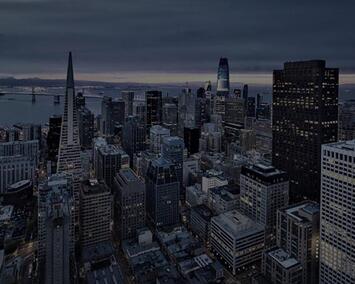
Over the past few weeks, seemingly endless stories have detailed San Francisco’s continuing troubles, with its retail core collapse and high office vacancy rates being the latest areas of serious attention. Recent developments in the City by the Bay are only the latest set of problems that residents and politicians are confronting, from truly troubling concerns with lawlessness and public safety, housing and homelessness, ultra-progressive politics in schools and on social issues, and on questions of affordability and future development. With these recent trends, noted by the Washington Post, San Francisco has become the “poster child for the crises facing downtowns” and over 65,000 residents left the city between 2020 and 2022.
While many talk about fixing old urban centers, politicos and planners must confront another reality about the recent population flight from inner cities: Americans are no longer interested in living in big, dense, old cities with historic cores cities like San Francisco, New York, and Chicago. The movement away from urban cores is not temporary. We are far from a “pre-pandemic normal.” While San Francisco has a remarkable history of innovation and grit, many need to stop looking at San Francisco as a city to be “fixed” but a city to be radically reconsidered. The city must not only confront its “big problems” but also the fact that Americans do not want to live in dense urban cores.
Data from the Survey Center on American Life reveal that those big cities—despite having clusters of industries like banking and tech and thus the values of propinquity, density, and scale—are simply not where most Americans want to reside since the emergence of the COVID-19 pandemic. Even younger generations of Americans—those who traditionally flocked to big cities for careers, social lives, and cultural amenities—actually show greater interest in suburban living than dense city living despite endless and often incorrect narratives about younger Americans being drawn to the lights and energy of city centers. The majority of Americans are willing to trade easy access to public amenities and transit for more space to themselves and distance from their neighbors. Perhaps driven by idealized visions of rural life—small, tight-knit communities that move at a more leisurely pace—many Americans now express a preference for small-town life, and remote work is allowing that to happen. About 15 percent of Americans surveyed stated they would prefer living in a town, while over a quarter (27 percent) would prefer living in a rural area. More Americans would prefer to live in a suburb (33 percent) compared to a small city (16 percent) or a large city (9 percent). And the cities that grew since the pandemic—conurbations like Denver, Charlotte, Nashville, and Dallas—are overwhelmingly suburban in nature.
These new realities are lost on many in San Francisco who think that residents can be lured back. In reality, interest in living outside old urban cores is now the norm. A 2020 Los Angeles Times/Reality Check Insights national poll found that when residents of big cities were asked about the ideal setting of their next home, a majority of big city dwellers said something other than their current situation. Just 44 percent would pick a big city once again, while only 9 percent would prefer a small city, 17 prefer rural areas and towns, and 25 percent prefer the suburbs.
Read the rest of this piece at AEI.
Samuel J. Abrams is a professor of politics at Sarah Lawrence College and a senior fellow at the American Enterprise Institute.












